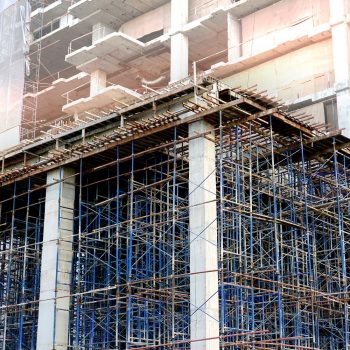Living Nowhere…Building back slower has a long term social cost
Building back better now means building back slower: particularly in the UK, where construction targets set by Theresa May in 2018 (remember her?) promised “a new generation of affordable homes to fix our broken housing market”: 300,000 a year to be precise. But there was (and is) a problem. As the Chartered Institute of Housing pithily pointed out at the time, “there’s no new money”, which is why the government’s target has been missed consistently ever since. Last year 52,100 new affordable homes were completed with 57,417 starts, which is a 12% and 16% decrease respectively on the previous year: there’s no new money. And only 32,000 of those new homes will be available for occupation during the course of 2022. Even allowing for the debilitating strictures of COVID, that’s a dismal performance …and underperformance on that scale comes at a cost.
Last year, 227,000 people in the UK were living with the cruel realities of homelessness (www.www.bigissue.com): sleeping on cold pavements, or sheltering in vans and sheds if they weren’t lucky enough to find the desultory comfort of short term B&B accommodation. That’s seven times more than the number of affordable units available to house them, and it doesn’t take into account the tens of thousands more sleeping on sofas and floors, who are effectively removed from the available statistics.
And, of course, the UK isn’t alone in this: despite the striking success of India’s Pradhan Mantri Awas Yojana (or PMAY) programme, which was created in 2015 to provide utility housing for the Subcontinent’s homeless, and has since delivered 11.3 million starts and 4.8 Million completions, the Ministry of Housing and Urban Affairs (www.mohua.gov.in) still estimates near term supply will undershoot demand by 11.2 Million units. That’s due in large part to India’s increasing levels of urbanisation, with millions migrating from the heartland in search of a better way of life: but it also speaks to a deeper, darker problem…like the blundering and blustering administration of the former mother country, India too has to find a way to build back better.
So this is not a time for anyone to rest on their laurels, even if (like the UK) they never had any to begin with.
What’s to be Done?
The root cause can be stated simply: we’re not building enough homes, and we’re not building them fast enough, largely because across the world we’re still shackled to outmoded construction technologies. Dinosaur development simply takes too long, with site workers wading laboriously through mud, waiting helplessly whenever the weather takes a turn for the worst, and creating higher levels of waste than any other comparable industrial sector. The homes they build take twice as long to complete, and cost three times as much as they should.
And how do we know that? Well, we know it for sure, because we also know exactly what the alternative is.
Modular Construction prefabricates units off-site in climate controlled conditions to reduce lead times (without the hazards of mud and rain), carefully calibrates orders to avoid wastage, and tops out 50% quicker than its lumbering dinosaur counterpart (www.mckinsey.com): all of which means a radical improvement on the bottom line too, with operating margins in excess of 30%.
Modular construction increasingly draws on Building Information Modelling (BIM): an advanced 3D process that ensures smoother, more effective, planning from conception through to completion, cutting out the guesswork in the process: nothing happens on site until the individual units are ready to be slotted into a digitally formulated (and far quicker) final assembly. BIM also helps reduce waste, because contractors are no longer reliant on 2D drawings that, as any builder will tell you, usually become obsolete almost from the moment a conventional development gets under way.
And that’s not all: Modular developments are also making use of Augmented Reality technologies (accessible through smartphones and AR viewing devices) to obtain a better and more precise vision of what the finished building will look like. Architects, quantity surveyors and engineers don’t have to visit the site to make key decisions…and that means a further saving in costs, as well as a better appreciation of what the project will actually look like and how best it can be delivered.
Now that’s building back better…it’s time to embrace its full potential and help make homelessness a thing of the past.
Executive Overview
Housing shortages are a global phenomenon, with some countries doing better and some worse in dealing with the misery homelessness brings to millions: but it doesn’t have to be that way. We can address the root causes more effectively by harnessing the full potential of emerging technologies.

Modulex Construction (www.modulex.in) is the World’s largest Steel Modular Building Company. It was established by Red Ribbon (www.redribbon.co) to harness the full potential of fast evolving technologies, and deliver at pace to meet social needs within global communities.



.jpg?width=150&height=150&name=shutterstock_2026962284%20(1).jpg)



Leave a Reply